Looking for the best CRM for freelancers? Check out our list of the top six CRM solutions for freelancers in 2024 to get the best features for your business.
CRM metrics are key data that sellers track using CRM software. They’re important to sales success because they help sales professionals assess how well they’re doing in their efforts while giving them clarity to make better decisions. In this article, we’ll be sharing the top five CRM metrics important to monitoring a company’s overall growth and success, along with a step-by-step guide on how to set up and track your chosen metrics in your CRM software.
Thank you to Salesforce for sponsoring this article. Salesforce is a highly-customizable CRM that enables users to track the metrics that matter most to their business, then view them at a glance in reports and dashboards. In this article, we've used images from the CRM to show examples of how you can record and pull key metrics. Check out their website to start a 30-day free trial:
CRM software automatically tracks sales data and lets salespeople manually log their own data and interactions. These pieces of information can then be used to create and automatically track key sales metrics at the individual, team, and company level. These chosen CRM metrics serve as the foundation for more detailed CRM reporting, which forms the basis for CRM dashboards offering a snapshot of all your important metrics and reports in one view.
Common CRM metrics include things like conversion or close rate, retention rate, churn rate, net promoter score, and more. For example, net promoter score lets customers rate your service out of 10. You could track that metric and include it as part of a monthly customer service report showing the growth rate of customer satisfaction over time, and then add it to a central CRM dashboard to stay up-to-date on how it’s moving in real-time.
CRM software is capable of tracking hundreds of metrics, but it’s unrealistic for a sales team to focus on them all. Instead, it’s best to track a few key CRM metrics that offer a detailed look at a company’s ability to grow revenue and provide a positive customer experience, along with a sales team’s effectiveness at hitting its projected goals. Let’s take a look at the ones that will best help you.
There are five CRM metrics we believe all sales teams should incorporate into their CRM dashboards and reports. We selected these metrics because while every business has its own objectives and interpretations of success, they’re often built around the pillars of sales growth, customer satisfaction, and internal performance — all of which these metrics touch upon. They’ll also serve as a foundation on which other relevant CRM metrics can be added.
Here are the top five CRM metrics to track:
The data presented in our screenshots have been created for the sole purpose of showcasing CRM reporting. Therefore, it may be imperfect or otherwise unlikely in a real-world scenario.
Who Should Track This Metric: Sales and marketing teams that want to measure the percentage of leads that convert into customers.
Close rate measures the percentage of prospects that converted into a customer. This is an important metric for salespeople to track and see how they are individually performing, but also good for sales managers to track overall performance. It's also an important metric for marketers to ensure the leads they’re generating are high quality.
The basic formula for close rate is:
Close Rate = (# of conversions / # of prospects) x 100
This formula can also be adapted to any marketing channel. For instance, when tracking a close rate for an email campaign, the “prospects” in this case would be the total number of emails sent. Meanwhile, figuring out the close rate for a landing page would involve dividing total conversions by the number of site visitors.
There is no universal standard when it comes to determining an ideal close (aka conversion) rate, as average conversion rates vary among industries and marketing channels.
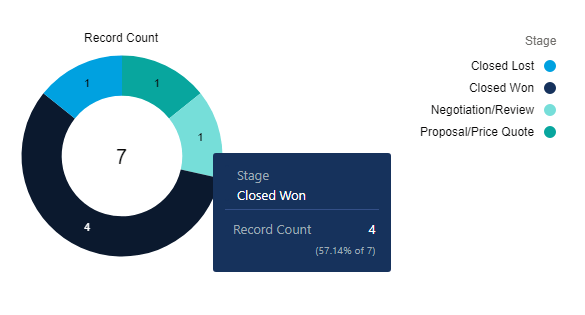
Who Should Track This Metric: Client-facing teams that want quantifiable evidence of customer loyalty over a period of time.
Customer retention rate measures how effective a business is at keeping customers. It highlights the likelihood of someone returning to buy additional goods or services. Following this metric can benefit a business’s bottom line since acquiring a new customer costs 5–10 times more than maintaining an existing one. Client-facing teams like sales or support should track customer retention rate to understand how invested customers are in a business.
The basic formula for customer retention rate is:
Customer Retention Rate = ([# of customers at the end of a time period – # of new customers acquired during that period) / # of customers at the start of the time period]) x 100
Before calculating customer retention rate, have a time period in place (weekly, monthly, quarterly, or yearly). Subtracting the total customer retention rate from 100 will reveal the percentage of customers lost, or churn rate. However, it’s important for businesses to track churn rate independently because it complements the customer retention rate by providing insight into when and why a business is losing customers, as we’ll explain in the next section.
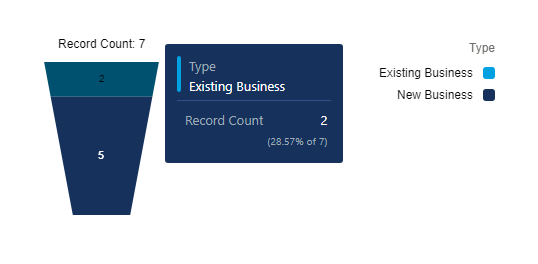
Who Should Track This Metric: Sales teams that want a clearer understanding of why overall growth is stagnating.
Churn rate measures the number of customers that no longer buy from a business. Customer churn is inevitable for any business, but high churn can negatively impact a business’s profit margin and overall growth. Plus, high churn can inspire businesses to investigate other potential issues like poor customer satisfaction and ineffective marketing initiatives. Regularly tracking churn rate will aid sales teams in identifying and fixing related trends before it’s too late.
The basic formula for churn rate is:
Churn Rate = (# of customers lost / # of customers within a time period) x 100
Like customer retention rate, a specific time frame should be in place when calculating churn rate. While calculating churn rate alone won’t shed a light on the reason for customer attrition, it can motivate businesses to take a look at its net promoter score for possible indicators of dissatisfaction. We’ll take a look at how to calculate net promoter score in the next section.
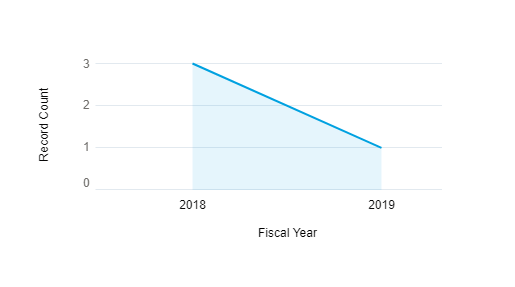
Who Should Track This Metric: Reps who want to leverage positive and negative customer feedback to increase sales.
Net promoter score (NPS) measures a customer’s willingness to recommend a product or service. This data is collected via an online survey that’s administered after a purchase or query. NPS classifies respondents as promoters, passives, and detractors. Sales reps can use NPS data to identify promoters and leverage their loyalty to increase cross-sales, and to find potential churns (passives and detractors) so they can reach out and salvage the relationship.
The basic formula for NPS is:
NPS = % of promoters – % of detractors
NPS data is generated from the results of a net promoter survey. There are several ways to approach this, but the main theme is to ask a straightforward question and receive a customer rating in return.
Survey respondents are categorized as follows:
NPS is a global benchmark. So, while ideal scores will vary among industries, the global average NPS is +32.
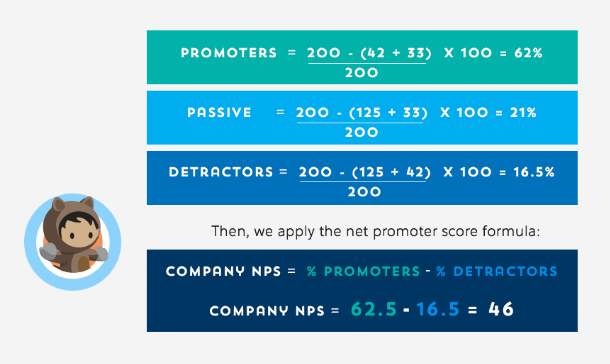
Who Should Track This Metric: Sales managers who want to evaluate team performance and tailor expectations.
Quota attainment measures how close individual sales reps are at hitting a defined target or goal. It pinpoints a sales team’s top performers and weak links. However, if this number is consistently low, it may indicate unrealistic expectations or a lack of proper training. Quota attainment should be tracked by sales managers to provide meaningful feedback during one-on-one sessions, identify necessary team structure changes, and generate tenable revenue forecasts.
The basic formula for quota attainment is:
Quota Attainment = (# of total sales / target number) x 100
Quota attainment can be measured monthly, quarterly, or yearly. Generally speaking, if 80% of a sales team is hitting their targets most of the time, that’s indicative of a realistic quota. Anything less may signal unrealistic expectations, inexperienced staff, and/or an organizational problem.
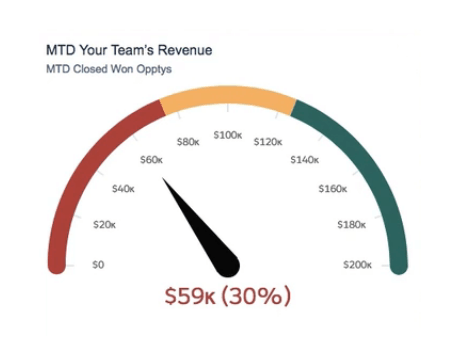
Now that you know the top CRM metrics, let's discuss how to track them in your CRM. Keeping up with these metrics should be similar in most CRMs. However, because there might be slight differences, we've incorporated examples from Salesforce below, which is a powerful CRM tool with advanced custom reporting dashboards great for staying on top of key metrics.
To track the critical metrics for your business within your CRM software, first choose the metrics you want to track, then create a report in your CRM using those metrics. Finally, put the metrics into a dashboard for you, your team, or your entire organization to access. We'll provide additional details on each step below.
First, decide which metrics you'd like to track. Start with a few key metrics, then you can track additional ones as needed — as you get used to keeping an eye on a few crucial metrics, you'll naturally think of more that would be helpful. To pick your first few metrics, take the steps below:
Once you've decided on your metrics, identify the corresponding data you'll have to pull from your CRM software; for example, to track the metric "close rate," you'll pull the data "conversions" and "prospects." You'll use this information as you build your CRM report in the next step.
Your CRM may call the data you've chosen by a different name, so the best way to find what you want is by navigating to the reports page of your CRM, starting a new report, and seeing which data your CRM lists. As you start the report, you can do the following:
For example, if you choose to include "close date," you can then filter to include a time period, such as a certain fiscal year. To build a visual chart around each lead's location within the pipeline, we've grouped the report by "stage" in the Salesforce report builder:
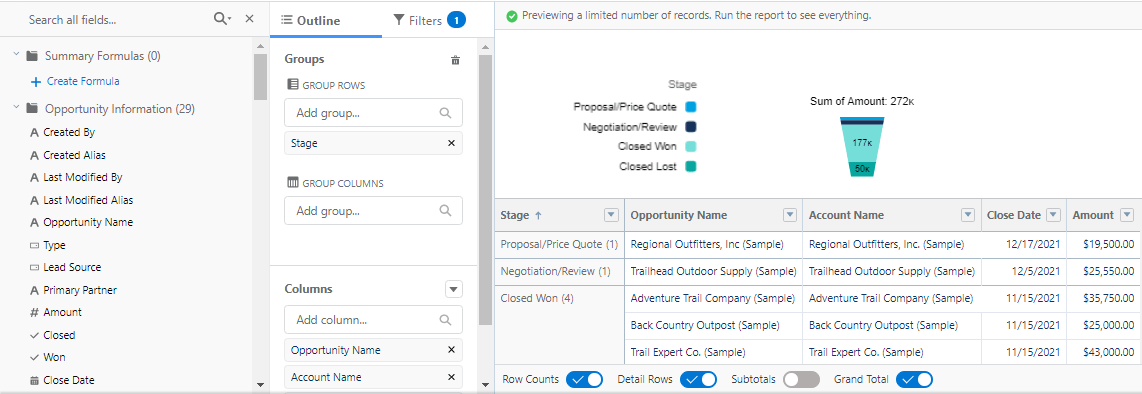
As you choose and organize the data that will help you track your key metrics, your CRM will likely show you a preview of the table and visual report so you can ensure it will show what you want in the most helpful way. When you're happy with the report, you can run it to exit the preview and officially view the report. Save the report when you're finished building it so the data will continue updating in real time and you can reference it whenever you'd like.
Once you have a few reports showing the various metrics you've chosen to track, you can group the reports into dashboards to have an easy way to access the reports you're running and view them together. There are a few basic steps involved in this:
As you create and modify your dashboard, also pay attention to the report and dashboard permissions. If you want to be the only one to access them, make the report and dashboard private. If they should be available to your entire team or company, set them to public.
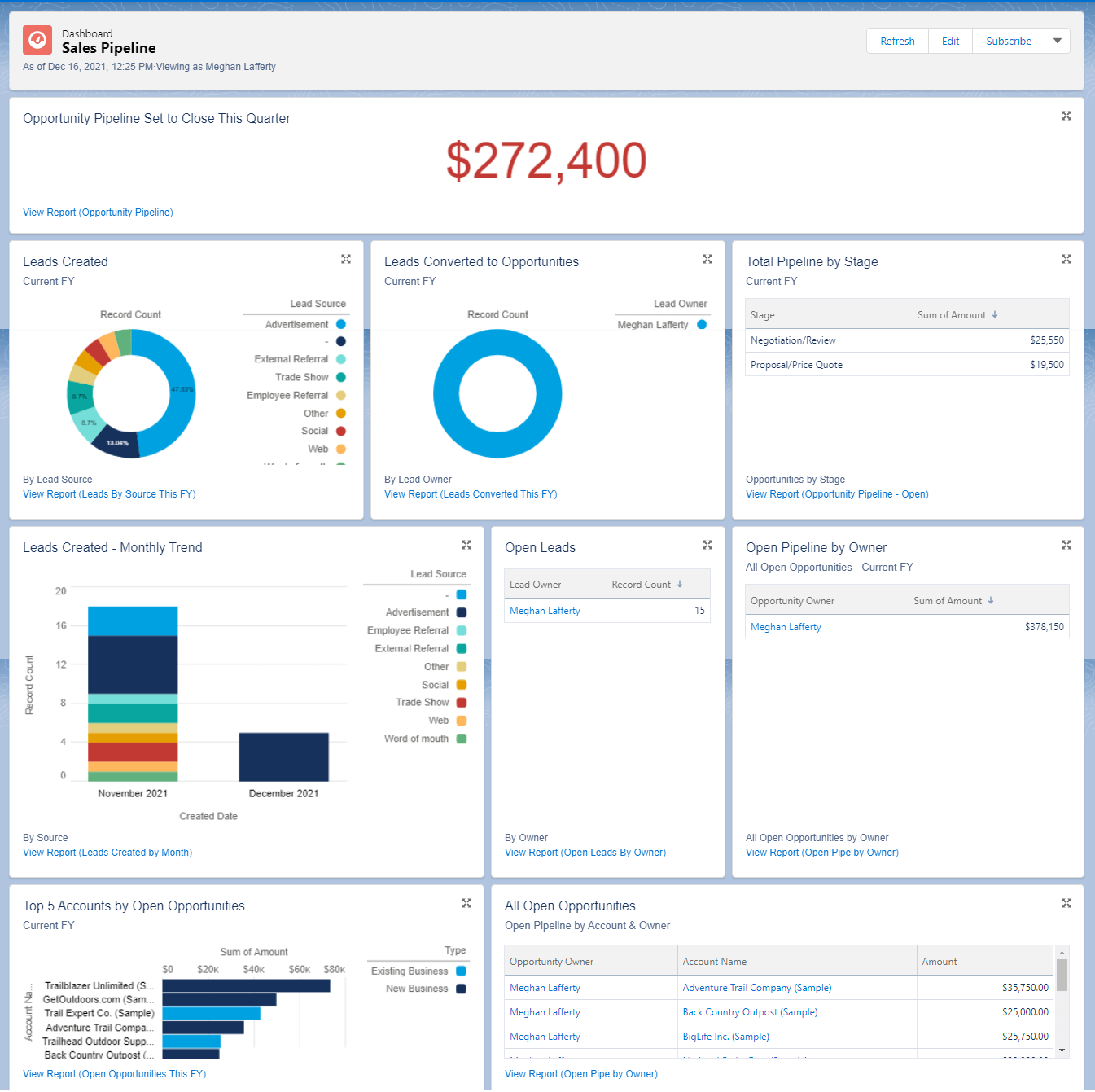
Your completed dashboard will look similar to the sales pipeline dashboard above. Each dashboard you create should have a certain theme so the reports within it work together to tell the story that will be most helpful to you and/or your team.
CRM metrics play a key role in developing a viable sales strategy, identifying positive and negative customer trends, and gauging the overall health of a business. Knowing which metrics to measure, and how to track them in a CRM software, is only the beginning. Eventually, sales teams can harness those metrics to generate CRM sales reports to add to CRM dashboards so they can always be aware of what’s happening and be equipped to make better decisions.